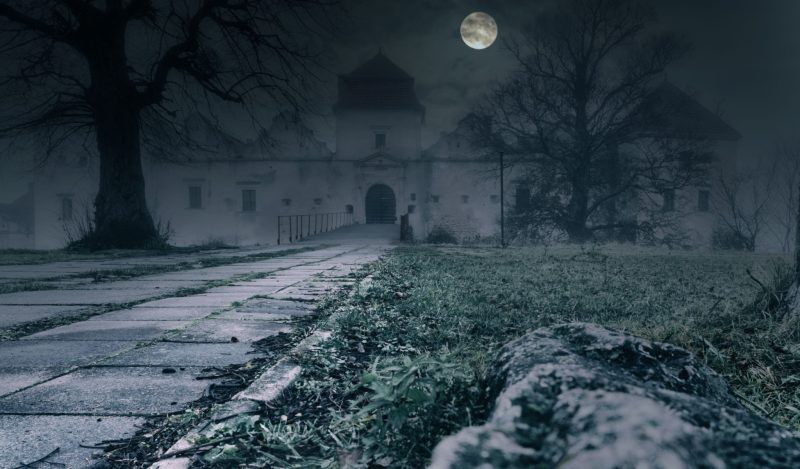Two years ago, attorney and Brownstone Fellow Bobbie Anne Flower Cox took note of the New York State executive order to permit the building and use of quarantine camps. The litigation against it is still in process. We might have supposed it was an outlying case. That, sadly, is not true.
It turns out that the first federal quarantine camp (not called that of course) constructed in one hundred years (since the Great War’s round up of Germans on US soil) was completed in January 2020 in Omaha, Nebraska. It was immediately used to house Americans kidnapped from their vacations from aboard the Diamond Princess cruise liner.
I first read about this in a July 26, 2021 article in the New York Times.
A shiny new federal quarantine facility in Omaha — the first constructed in the United States in more than a century — was finished in January 2020, just in time to receive 15 American passengers from the coronavirus-infested Diamond Princess cruise ship.
It’s not a big facility but it was enough to give the whole idea a big kickoff. That happened immediately upon its opening. How long would this have taken to construct? Let’s say it was four or five months. That means it would have to be approved sometime around September 2019, when it is plausible that some US officials were made aware of a lab leak from the Wuhan lab. Figuring it was a bioweapon or something like it, and with “germ games” ongoing, the plan might have been to use this one and build more.
We don’t know for sure.
If that is true, it really does adjust the timeline. The Wuhan junket in which US and UK officials discovered from China’s lockdowns that this was an effective plan for disease control might have just been optics. The idea of quarantines and possibly lockdowns was already in the works. That’s speculation but plausible.
“Our state-of-the-art facilities include the 20-bed National Quarantine Unit, the nation’s only federal quarantine unit, and a six-bed simulated biocontainment unit for advanced experiential training – the National Biocontainment Training Center,” says the website. “This high-fidelity simulation center includes a mock lab and autoclave.”
There is this advertising video.
The day before US lockdowns were announced at a Trump press conference, Esquire wrote a celebratory article on the facility. Headline: “Esquire was granted exclusive access to the nation’s only federal quarantine and biocontainment center in Nebraska. We met the people who work there, and they are as extraordinary—and as courageous—as you think they are.”
The access was granted by whom? A September 2023 article says that the camp was authorized by the Administration for Strategic Preparedness and Response (ASPR), a division of the Department of Health and Human Services, which had also released the closest thing we have to a pandemic plan on March 13, 2020. So perhaps it was ASPR who commissioned this puff piece.
Having profiled all the scientists and nurses who work there, the Esquire article celebrates the heroism of the workers. The co-author of the article is Bronwen Dickey, who was doing a stint as a journalism fellow at Duke University, which had become a center of pandemic planning research with a stream of funding from the National Institutes of Health.
By 2021, an expansion was already underway. “Omaha has been selected to build a new federal disaster response center on the University of Nebraska Medical Center to improve the nation’s ability to respond to catastrophic events such as pandemics, natural disasters, or a direct attack on the United States,” said a press release from the city.
“The U.S. Department of Defense selected Omaha and four other sites; the announcement was made Wednesday by Nebraska’s congressional delegation. The project will be led by the Department of Defense in coordination with the Department of Health and Human Services, other partner agencies include the Veterans Administration, Department of Homeland Security, and Department of Transportation.”
That’s a lot of deep state action right there.
Where are these other sites? So far as we can tell, they are Washington State (with some controversy), Orange County, California (“Health Center”), Tennessee, and one other we cannot find, but it surely includes New York State by now. No city government would likely turn down a federal contract worth millions and billions.
The history of the abuse of the quarantine power gives rise to chilling examples. Indeed, there is not a huge distance between quarantine power, quarantine camps, detention centers, internment camps, and concentration camps. They are all based on the state power to name a person or group as a threat, politically or therapeutically, and uproot them by force.
Civilized countries do not do this, one might suppose. But in the 1892 typhus outbreak in the US, it became common to arrest and quarantine any immigrant from Russia, Italy, or Ireland even without any evidence of disease. In 1900, the San Francisco Board of Health quarantined 25,000 Chinese residents and gave them a dangerous injection to prevent the spread of bubonic plague. We know about the Japanese internment during World War II, which ended up promoting disease. Fears of AIDS in the late 1980s led to calls for arresting Mexican immigrants to prevent the spread of disease.
There was no federal power of quarantine from the founding until the Public Health Services Act of 1944, passed during wartime for reasons we’ve yet to discover. The wording of Section 361 is vague enough to be interpreted in many different directions. The CDC even cited this law in defense of its transportation mask mandate.
More recently in our time, the US effectively forced house quarantine on as much of the population as possible, even while permitting “essential” workers to be out and about to deliver food and services to those lucky enough to have laptop jobs. Artists, servers, pastors, and millions of others were simply out of a job and told to be happy with their stimulus payments.
And it’s not just about disease. The quarantine power has been used by despotic governments all over the world to round up political enemies under the thinnest excuse. Fear of disease is as good an excuse as any but calling a group diseased has a long history of being politically charged, as students of eugenics and the Holocaust know.
The problem is not only the abuse; it is power itself. The facilities now being built – they were widely deployed in Australia during the Covid pandemic – are a predictable follow-up. And what could be the point of building and staffing such places except to use them? In government work, it is always the same: use the budget and the power or lose it to another competitive purpose.
This is another case of the overriding ethos in these post-pandemic times. Far from dialing back on their errors and pulling back on their powers, the entire sorry episode is being used as a template and excuse to ramp up the powers and plans, with every intention to cause a repeat of something similar. When that time comes, they will have far more than 20 beds ready in their facilities.
Join the conversation:


Published under a Creative Commons Attribution 4.0 International License
For reprints, please set the canonical link back to the original Brownstone Institute Article and Author.









